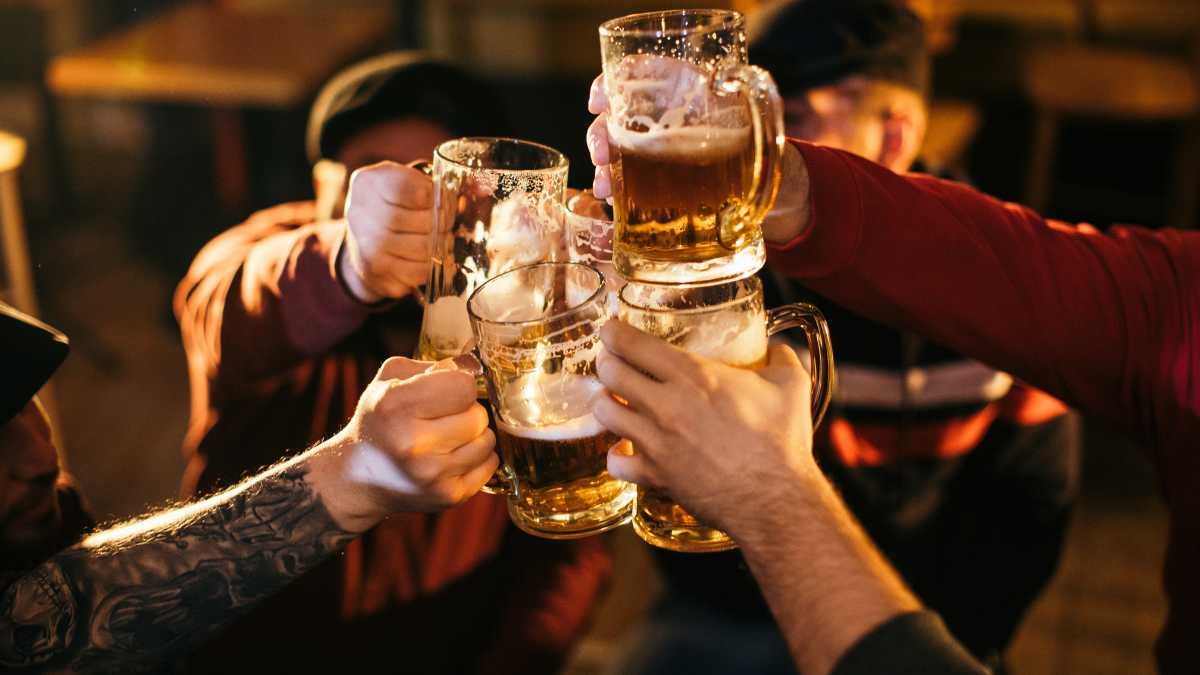Imagine a balmy evening in Abu Dhabi, with the sun setting and casting a warm glow over the city, friends gather at a local watering hole, clinking glasses filled with golden brews. Laughter fills the air as they swap stories and savor the crisp, refreshing taste of their favorite beers.
In Abu Dhabi, the appreciation for fine beverages thrives. Here, beer holds a special place in the hearts of many.
Whether you’re a seasoned beer aficionado or just beginning to explore the vast array of flavors, understanding the art of beer-making is an adventure in itself.
Remember: Beer in Abu Dhabi is more than just a drink – it’s a cultural experience. This informative guide will take you on a journey from grain to glass, unraveling the intricate beer-making process. So, grab a cold one and dive into the fascinating world of brewing.
What Is Beer Made Of?
Beer is crafted from a handful of key ingredients.
First, there’s water – the main component of beer, which comprises the bulk of the final product. It also has grain, typically barley, which provides the fermentable sugars essential for brewing.
Beer won’t be complete without hops, the flowers of the hop plant. These little wonders add bitterness, flavor, and aroma, enhancing the brew’s complexity.
Finally, there’s yeast, the magical microorganism responsible for fermentation. Yeast consumes the sugars from the grain, producing alcohol and carbon dioxide as byproducts.
Together, these components create the rich flavors and aromas beer enthusiasts love.
How Is Beer Made?
Beer brewing is a meticulous craft that entails carefully orchestrated steps that contribute to the unique character of the final product. Variations in ingredients, brewing techniques, and fermentation temperatures lead to diverse beer styles, each with distinct flavors and aromas.
Here is a breakdown of the different stages of the beer-making process:
Malting
Malting marks the beginning of the brewing journey, where raw barley undergoes a transformative process.
During malting, barley grains are steeped in water to initiate germination. Enzymes within the grain break down starches into fermentable sugars.
After that, the germinated grains are dried in a kiln or roaster to halt germination, producing malted barley rich in the sugars necessary for fermentation.
Mashing
During the mashing stage, malted barley is mixed with hot water in a process designed to extract sugars and other soluble materials, forming a sweet liquid known as wort.
The mash (a porridge-like mixture) undergoes various temperature changes to break down different components of the starchy endosperm, ensuring optimal sugar extraction.
The temperature and duration of the mashing process are carefully controlled to activate specific enzymes that convert complex starches into simpler fermentable sugars. This step helps determine the fermentability of the wort and ultimately influences the flavor, body, and mouthfeel of the finished beer.
Boiling
Boiling the wort is a pivotal step in beer production, serving multiple functions crucial to the final product quality.
During boiling, residual enzymes from the mash are inactivated, hop α-acids undergo isomerization to impart bitterness, and unwanted compounds are removed.
The boiling process typically lasts under 90 minutes. It requires precise temperature control to avoid undesirable flavors and ensure the proper concentration of the wort.
Various hop additions at different stages of the boil contribute to the beer’s aroma, flavor, and bitterness profile. Boiling also serves as a sterilization step, eliminating microorganisms that could spoil the beer during fermentation.
Fermentation
The boiled wort is cooled and transferred to fermentation vessels, where yeast is introduced. Yeast works to break down the sugars in the wort, producing alcohol, carbon dioxide, and heat.
Temperature control during fermentation is paramount, as different yeast strains thrive within specific temperature ranges, impacting the beer’s flavor profile and fermentation time.
Beer can be fermented in open or closed vessels, with each method influencing its final characteristics. Factors such as yeast strain selection, pitching rate, and oxygenation levels play crucial roles in determining fermentation efficiency and beer quality.
Aging
Following fermentation, the beer undergoes a conditioning phase where flavors mature and harmonize. Aging allows any remaining yeast and sediment to settle while flavors mellow and develop complexity.
Note that not all types of beer can be aged. Alcohol content and yeast type can influence a beer’s suitability for aging.
Temperature consistency and darkness are essential for proper beer storage and aging, ensuring optimal flavor preservation. Some beer styles benefit from extended aging periods, while others are best enjoyed fresh.
Filtering and Carbonating
Post-conditioning, beer is filtered to remove remaining solids and stabilize the brew.
Carbonation, achieved by adding precise amounts of carbon dioxide, enhances the beer’s texture and mouthfeel. Quality control measures ensure consistency in carbonation levels, which is vital for delivering a satisfying drinking experience.
Before beer hits the shelves of your favorite liquor store in Abu Dhabi, meticulous attention to detail in filtering and carbonating ensures a top-notch product ready for consumption.
From Grain to Glass
Brewing beer is a journey of precision and passion. Quality ingredients, skilled brewing techniques, and creativity are necessary to create the unique flavors you love.
Explore the diverse world of beer and savor the craftsmanship in every sip.
Cheers to the art of brewing!












